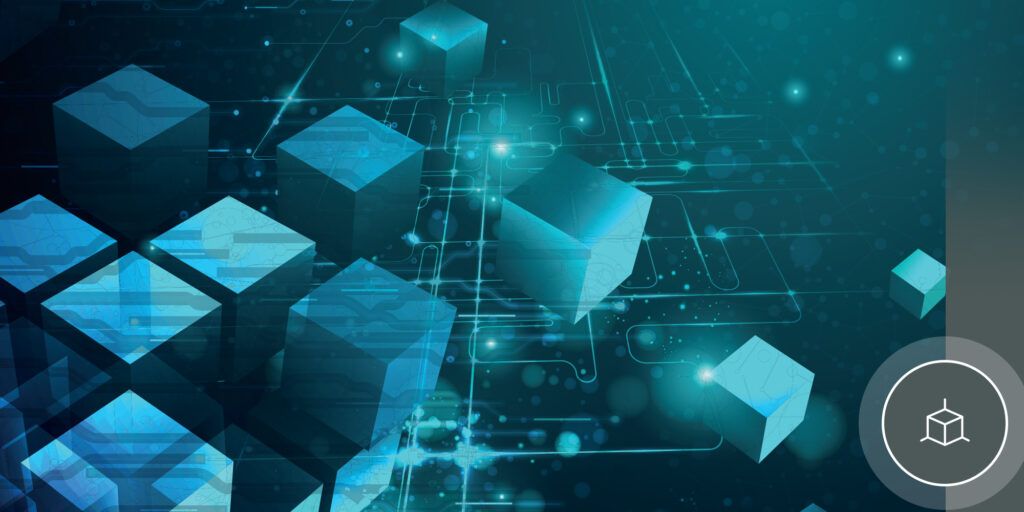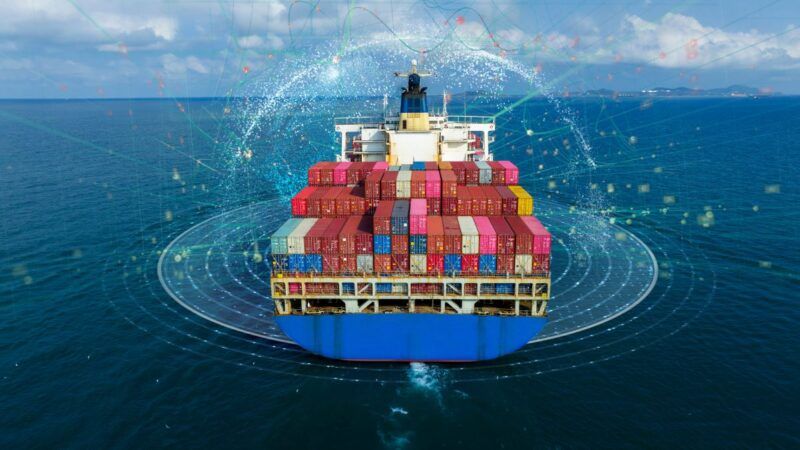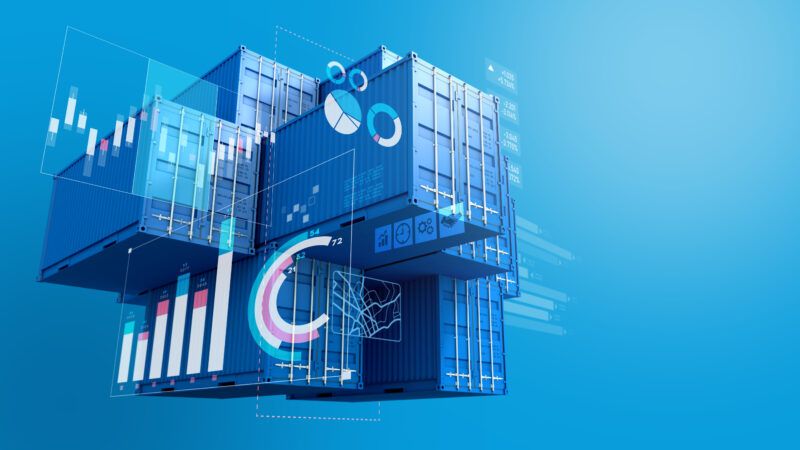 Blockchain came to the fore with the cryptocurrency Bitcoin, but its application has been spreading to other sectors. (GettyImages / PierNext)
Blockchain came to the fore with the cryptocurrency Bitcoin, but its application has been spreading to other sectors. (GettyImages / PierNext)
The landing of Blockchain in port management
Blockchain is one of the latest disruptive and transformative technologies that is starting to make a strong appearance in maritime logistics and port operations. Its characteristics offer integrity, transparency, traceability, trust in data management and transaction, qualities that add value to the business chain.

Ignasi Oliva is the Innovation Manager of Blockchain Technologies and DLT’s at the Fundació i2CAT.
 Blockchain came to the fore with the cryptocurrency Bitcoin, but its application has been spreading to other sectors. (GettyImages / PierNext)
Blockchain came to the fore with the cryptocurrency Bitcoin, but its application has been spreading to other sectors. (GettyImages / PierNext)
What is Blockchain and how does it work?
Blockchain or chain of blocks is a read-only distributed peer to peer ledger that contains encrypted information that is structured in blocks. Each block is linked to the previous block creating a temporary and immutable line that guarantees the integrity of the information.
It is a secure and transparent system, a technology that allows transactions to be processed in a decentralized way and validated by the network, generating trust among users. Any attempt to modify or alter the data is automatically detected.
The transfer of value is the most innovative and disruptive feature of this technology. The difference is that Blockchain technology manages to solve a problem: previously, a digital asset could be copied and its owner was exposed to this copy being used without his knowledge. Now, thanks to the characteristics of Blockchain, each value is unique and immutable, guaranteeing its value, the property, at the same time that it is carried out in a safe environment.
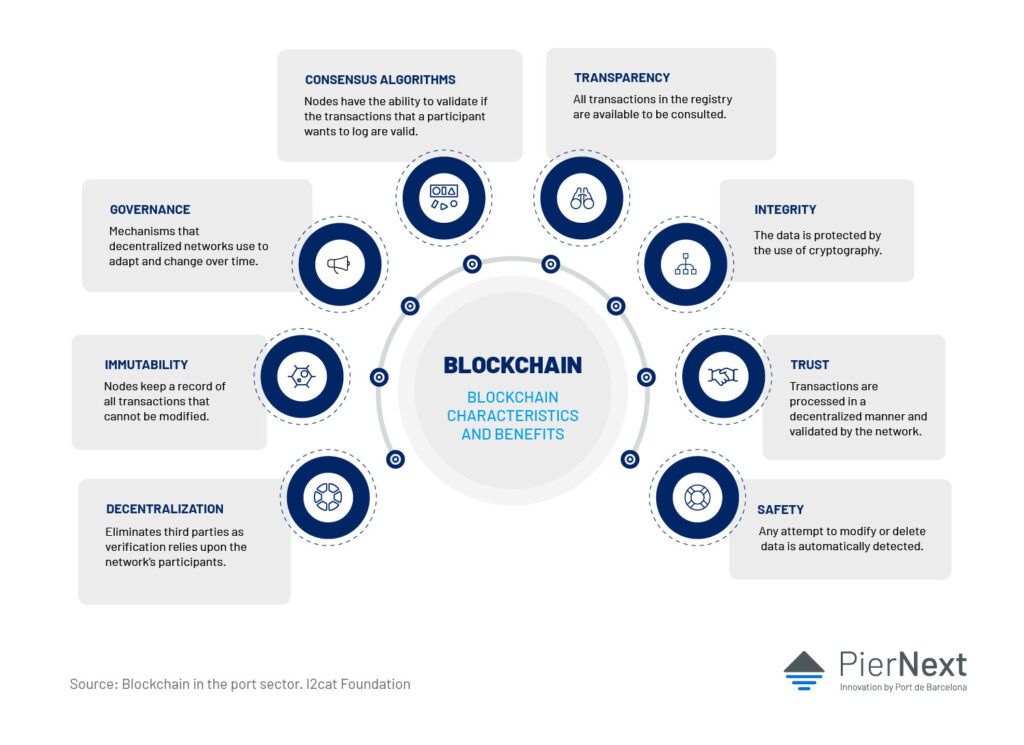
A constantly evolving technology
Blockchain is the result of combining and applying several technologies that already existed, such as cryptography, until now reserved to the research sector, which has allowed the current use of many of the encryption systems and algorithms developed.
Blockchain came to the fore with the cryptocurrency Bitcoin, which provided an internet-based value exchange mechanism that uses cryptography to carry out economic transactions, solving the problem of double spending, that is, preventing the same entity from spending the same currency twice, and solves it in a decentralized way.
It is also compatible and complementary with others such as the Internet of Things (IoT), Artificial Intelligence (AI) or Big Data and with electronic platforms such as Port Community Systems, since the Blockchain allows to certify transactions and operations data and incorporate to the blockchain the data obtained through sensors or other devices.
Blockchain is still a relatively young technology, with a lot of room to increase its possibilities of use. Its scope of application beyond cryptocurrencies, has begun to occur in the last two years.
Historically, the first use cases were intended to certify information, but their evolution has raised questions such as: what information do I keep? How can I resolve my digital identity? Who guarantees the privacy of the data? How do I get to scale the solution? Little by little, the Blockchain technological community has been solving or providing solutions to these questions.
Right now, one of the issues is scalability for the different public networks, since the number of transactions has been intensifying and this increase in activity saturates the network and increases the value of the commissions paid to register transactions on the Blockchain.
Another recent application of Blockchain is the creation of NFTs or non-fungible tokens, the digital version of an asset that can be a digital or physical representation of a product whose properties are unique and indivisible which can be bought or sold like any other type of asset. In this use case, although the buyer does not physically own this asset, the Blockchain keeps a record of who owns the file, which can be work of art, a song, or excerpts from an NBA game.
Degree of implementation of Blockchain technology
The report 'State of the art of Blockchain in Spanish companies 2nd Edition', by IDC Research Spain in collaboration with Realsec, highlights that the penetration of this technology in the Spanish business fabric in 2021 is 11%. It predicts growth in Western European investment figures that will hover around a compound annual growth rate of 47% and a market value that will reach 4 billion euros in 2024.
The areas where it has the highest penetration are collateral management, asset logistics, financial auditing, transportation and the supply chain, the registration of contracts and commercial relations, the processing of personal data or regulatory compliance.
Integrating the Blockchain in a company's operations means a change of mentality because it is a completely disruptive and transformative technology. In businesses or sectors where many agents are involved or many processes are carried out, it allows to generate an environment of trust because the data that is shared has been verified by the interested parties. Therefore, its security, integrity and immutability are guaranteed.
This trust is essential, since it requires the co-responsibility of all the agents involved in the operation to share relevant data in a safe and truthful manner to contribute to improve operations, increasing efficiency and optimizing resources. For this, it is essential for digitalization to be the strategic axis of the business and identify which processes would benefit from its use.
Sectors such as agri-food have been among the first to incorporate this technology. For instance, Carrefour launched in 2018 the first Blockchain food traceability system in Spain to trace the production and distribution of its free-range chicken, generating confidence and sanitary guarantee on this product.
In 2021, Blockchain penetration in the Spanish business fabric is 11% but it is expected to reach 47% in 2024
Blockchain technology applied to ports
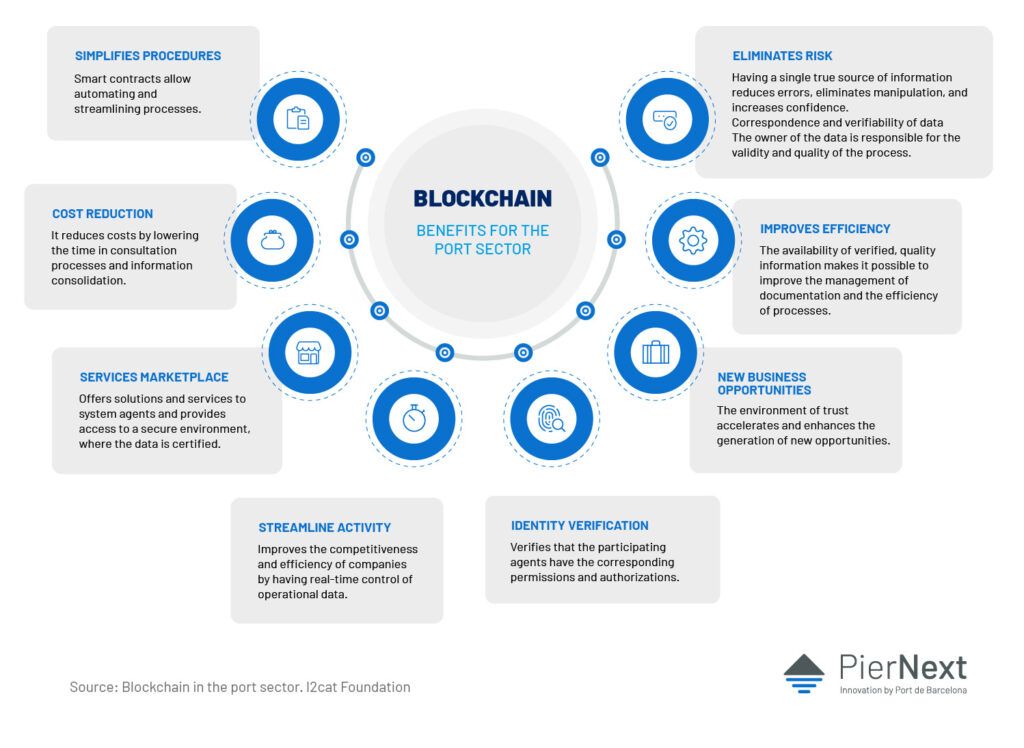
The Port of Rotterdam, through its Blockchain subsidiary company Blocklab and S&P Global Platts, conducted a pilot in August 2020 to test Distro, a decentralized electric power trading system, employing Blockchain technology and smart contracts that enable compliance with market rules, validate transactions and manage digital identities.
The goal is to support decentralized commerce for business consumers from its innovation hub looking to optimize and manage the use of renewable energy. Each participant was assigned an energy trading agent using artificial intelligence who learned their behavior, choices and needs.
The test validated 20 million transactions via Blockchain and the results were very positive; the cost to users was reduced by 11%, the incomes of local renewable energy producers improved by 14% and the consumption of solar power generation increased by 92%.
The system is designed to avoid excessive energy consumption, offering lower prices when the supply is abundant and vice versa, as the financial and raw material markets operate. To automatically optimize supply and demand, Blockchain has been used in conjunction with AI.
In a global logistics context, the interoperable TradeLens platform, promoted by IBM and Maersk, provides entities involved in global trade with digital tools to share information on container traffic, protected by the characteristics of the Blockchain; transparency, integrity, security, immediacy and trust. Currently, it has an ecosystem of more than 300 organizations, among which is the Port of Barcelona.


